This is the second part of a 3-part article, by Chris Hamilton of Hillsdale College, examining experimentally if Clarity Ferm reduces gluten in homebrewed beer. The introduction was posted yesterday and the results will be posted tomorrow. Hear an interview and tasting of samples on Basic Brewing Radio – September 4, 2014.
The overall goal of these experiments is to determine if Clarity Ferm does indeed reduce the level of gluten and related proteins and peptides to acceptable levels. The first set of experiments was done to determine the amount of Clarity Ferm needed to reduce the gluten to acceptable levels. The second set of experiments was done with a different beer and all trials done in triplicate as the additional variable of differing mash conditions was used to determine if a protein rest would aid in gluten reduction.
Beers
The first beer was a cream ale done as a partial mash. This style was chosen since the corn and rice used should make for a naturally lower-gluten beer. The recipe is detailed below, the mash was done at 66 ℃ (151 ℉) for 60 minutes and batch sparged at 70 ℃ (160 ℉). The recipe is for a 6.0 gallon (23 L) batch, which was split up into five different 4 L (roughly 1 gallon) bottles for fermentation at 20–21℃ (68–70 ℉).
The second beer was an all-grain American stout recipe based on a clone of Sierra Nevada Stout. The recipe is for a 6.0 gallon (237 L) batch, which was split up into six different 4 L (~1 gal) bottles for fermentation at 21℃ (70 °F). This beer was brewed twice with two different mash schedules. The single infusion mash was done at 67 ℃ (152 ℉) and sparge at 76 ℃ (168 ℉). The step mash had a protein rest at 49 ℃ (121 ℉) for 30 minutes, beta rest at 62 °C (143.5℉) for 40 min, alpha rest at 66 ℃ (151 ℉) for 40 min, and sparge at 76 °C (168℉) The fermentation was done at 20–21℃ (68–70 ℉).
The Cream Ale Experiments
The first set of experiments were done on the cream ale. After brewing, the cooled wort was allowed to sit for 30 minutes to let trub settle out. The wort was then racked to a 19-L (5-gallon) pail and shaken to aerate, and the rehydrated yeast was then pitched. The wort was then racked into five different glass jugs which each contained about 4 L (~1 gal). The first beer (A) was the control and no Clarity Ferm was added, to the second (B), 0.5 mL of Clarity Ferm was added, to the the third (C), 1.0 mL was added, to the fourth (D), 2.0 mL was added, and to the fifth (E) 5.0 mL of Clarity Ferm was added.
The beers remained in the fermenter for 3 weeks after fermenting at 20–21 ℃ (68–70 ℉). From each of the glass jugs, 50 mL of the beer was saved for analysis as an uncarbonated sample. The remainder of each beer was primed with glucose (corn sugar) and bottled. After 3 weeks of bottle conditioning, the beer (both carbonated and uncarbonated) was analyzed using the RIDASCREEN® Gliadin competitive kit from R-Biopharm to determine the amount of gluten and/or gluten fragments in the beer. This experiment was done in duplicate to verify results.
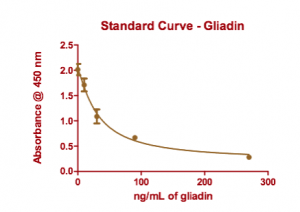
Figure 4: This is an example standard from the cream ale analysis, the fit of this curve was used to quantify the amount of gluten in each of the beers.
The Stout Experiments
The stout experiments were done similar to the cream ale experiments. The beers were brewed according to the recipe with the two different mash conditions stated earlier. The “3-step” mash was brewed on the first day, and the single infusion or “1-step” mash was brewed the next day. In this experiment the beer was split into six different 4 L (1 gallon) bottles for fermentation. Three of the bottles served as controls and to the other three bottles 2 mL of Clarity Ferm was added. This was done so that all experiments could be completed in triplicate. In this series of experiments, the beers were monitored throughout the fermentation process, at packaging, and again after bottle conditioning/carbonation. This allowed for monitoring the gluten content throughout the whole process. Like the Cream Ale experiments the levels of gluten were determined using the RIDASCREEN® Gliadin competitive kit from R-Biopharm.
—
Related articles
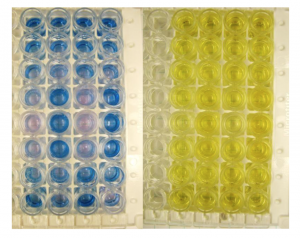
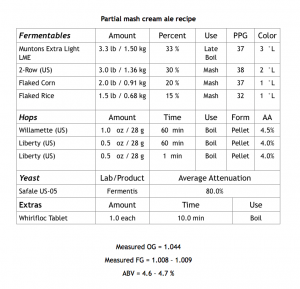
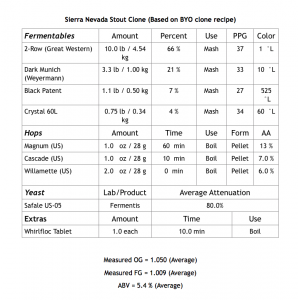
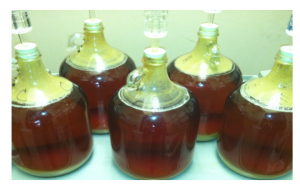

Speak Your Mind